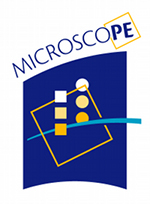The MICROSCOPE space mission aims at testing one of the main theoretical foundaments
of General Relativity, namely the Weak Equivalent Principle, stating the universality of free
fall. It would be of further interest if this experiment also provided a check of an implication
of this theory. That is why we propose as a response to the MICROSCOPE Call For
Ideas to set an experimental verification of the Lense-Thirring (LT) effect, which predicts that
the rotation of a spherical body like Earth will modify the surrounding space-time geometry,
slightly dragging the local inertial frames in the neighbourhood of the central body. Previous
attempts to measure this effect have been carried out, among them are the Gravity Probe B
mission, as well as the observation of the precession of the LAGEOS satellites orbits thanks
to the analysis of satellite laser ranging. The former used orbiting gyroscopes to accurately
measure the LT precession, while the latter was based on a careful analysis of two Earth satellites
orbits, achieving a 10% uncertainty on the estimation of the LT effect. We now would
like to study the feasibility of measuring the LT effect in the framework of the MICROSCOPE
mission, taking advantage of the drag-free system which compensates all non-gravitational
forces. This new experimental context will avoid the errors related to the modelling of these
perturbations, and will allow us to take the most of the recent improvements in the determination
of gravitational potential harmonics (thanks to GRACE and GOCE heritage, and
forthcoming new generation satellites). In addition, the proposed measurement will constitute
a cross-validation of the performance of the MICROSCOPE drag-free system.
- Presentation

 PDF version
PDF version
